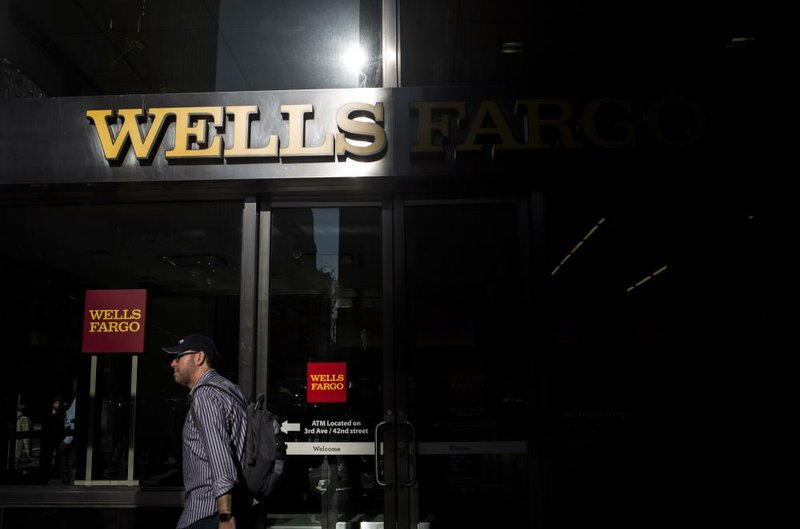Wells Fargo's sales scandal has cost the jobs of the chief executive officer, more than 5,000 rank-and-file workers and the head of the company's community banking unit.
But by and large, the faces at the top of the San Francisco-based bank remain the same. And, for some, that raises the question of whether new CEO Tim Sloan, a 29-year Wells Fargo veteran, can keep his pledge to overhaul the company's culture.
"When companies get into deep trouble financially, or in this case malfeasance, bringing in outside people is a common practice, and that was not done here," said Michael Useem, professor of management at the University of Pennsylvania's Wharton School. "It's unusual given the magnitude of this disaster."
Wells Fargo employees, pushed to meet sales goals, opened millions of accounts not authorized by customers. The lack of prosecution so far of any bankers in connection with the scandal has also given ammunition to critics who argue that Wall Street executives too often are given a pass for wrongdoing.
"It's not a square deal when the people that are fired are the tellers who make 15 bucks, and the senior execs walk off with $100 million," U.S. Sen. Joe Donnelly, D-Ind., said at a September hearing on the scandal. "These 5,300 tellers, they didn't come up with this scheme on their own."
Speaking to employees in Charlotte last week, Sloan said the bank still has "weaknesses within it that we must change." He and the bank's senior leadership are personally committed to taking "decisive actions" to prevent a repeat of bad behaviors, he said.
Changes at the top and elsewhere could be coming: The bank's board is conducting an investigation, which might result in more departures.
It's unclear when that investigation will end up. Meanwhile, the bank continues to face questions from lawmakers like Sen. Elizabeth Warren, the Massachusetts Democrat who signed a letter in October asking the bank's board if it addressed the question of whether Sloan played any role in the scandal.
Paul Miller, a banking analyst at FBR & Co., said Wells Fargo needs a "new, fresh set of eyes" to change its culture.
"This is a major, major crisis for a major institution," Miller said.
"One of the problems with that senior executive floor is they've all been at Wells for 20-plus years," he said. "That's where they needed to make some outside changes, and they didn't."
Wells Fargo notes a growing list of changes it has already made to rebuild trust with customers and others -- starting with the 5,300 employees it dismissed over five years for the misconduct. The terminations ranged from branch bankers to an area president, former CEO John Stumpf testified to Congress in September. Weeks later, the bank announced that Stumpf was retiring.
Also, Wells Fargo in July named Mary Mack, who had been running the brokerage unit, its new head of community banking, replacing San Francisco-based Carrie Tolstedt, who left the company. Other steps the bank has taken included getting rid of product sales goals for retail bankers in branches and call centers. Sloan has also said the bank will use outside "culture experts" to help pinpoint weaknesses.
Wells Fargo agreed in September to pay $185 million in government fines to settle allegations over its sales practices. The bank has also said Stumpf will forfeit all of his outstanding unvested equity awards, worth $41 million. He is still expected to walk away with millions in stock, deferred compensation and retirement benefits.
Some investors also want new members on the bank's board, even after the board split the chairman and CEO roles and appointed a vice chair in response to the scandal. Nearly half of the 15 members on the bank's board have been in place for a decade or more.
While Wells Fargo has fired workers for their involvement in the scandal, many regional presidents in the community banking segment at the center of the controversy remain in their jobs.
The Observer analysis found more than 60 percent of the presidents in place in 2011 still hold such roles.
The group includes presidents overseeing the West and Southwest. Those two markets had more fraudulent account activity than elsewhere in Wells' footprint, Stumpf testified to lawmakers in September.
Brian Simmonds Marshall, policy counsel at Americans for Financial Reform, called that "disturbing."
"Wells Fargo needs to continue to undergo a change throughout its management to demonstrate that they are taking customers' needs seriously," Marshall said. "And it's not enough only to fire 5,000-plus front-line workers and a handful of managers ... and let everything in between stay the same."
Information for this article was contributed by Rick Rothacker of the Charlotte Observer.
Business on 11/03/2016

